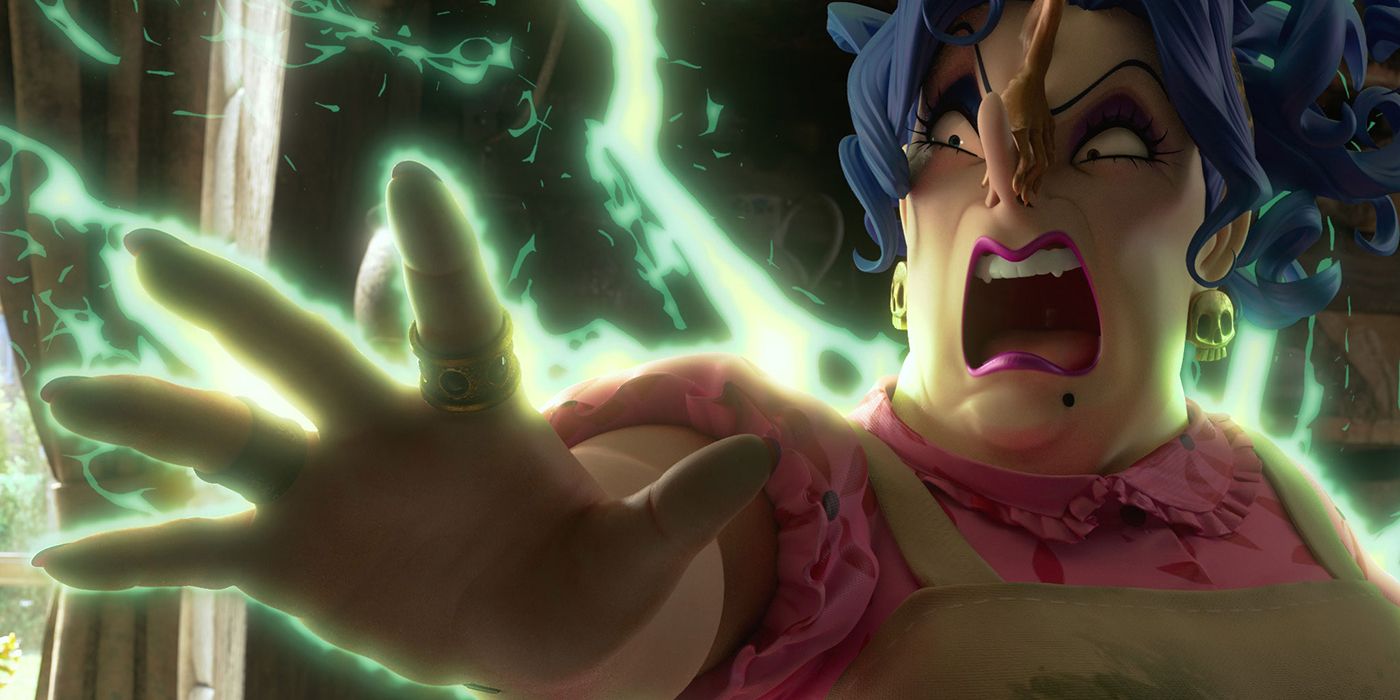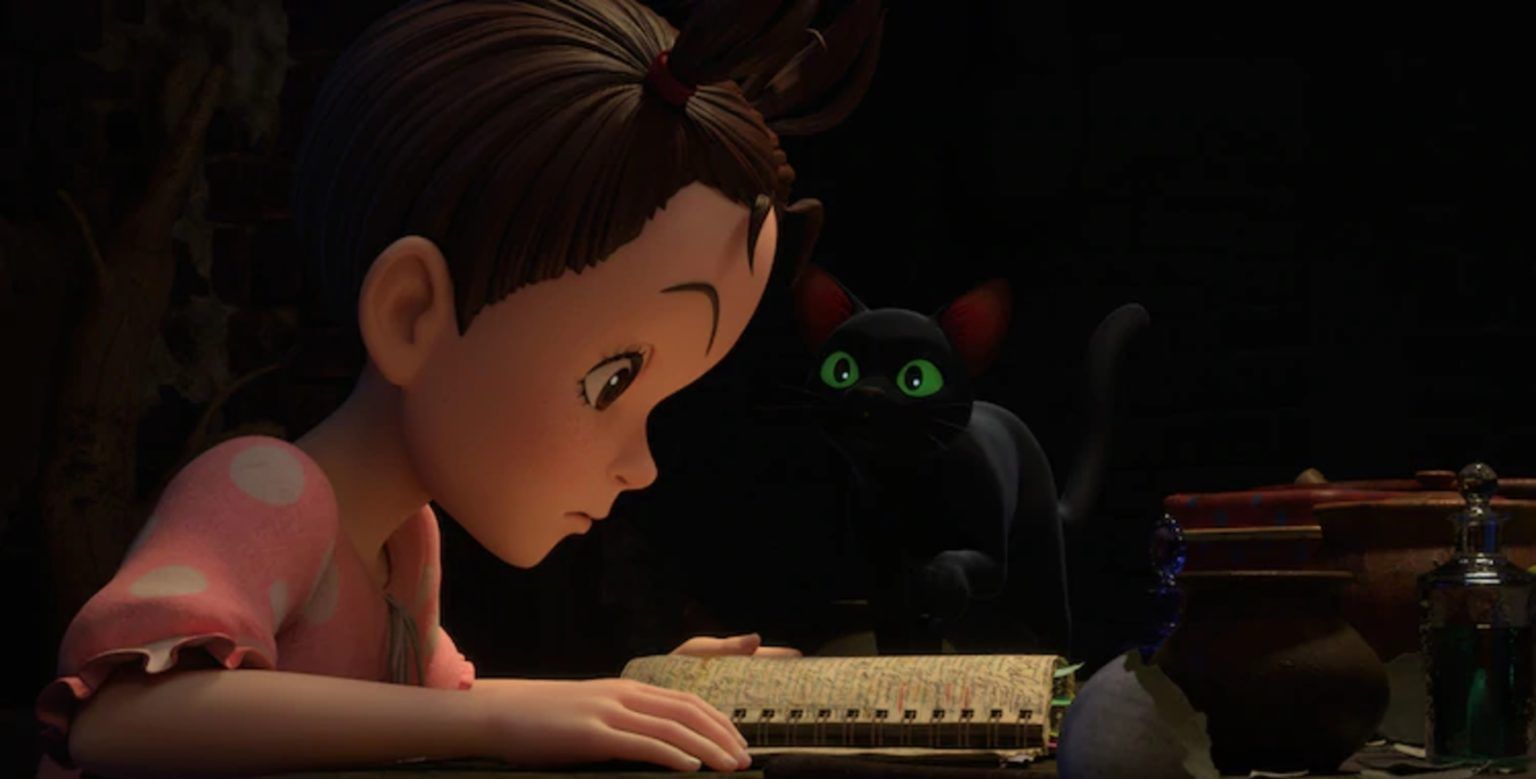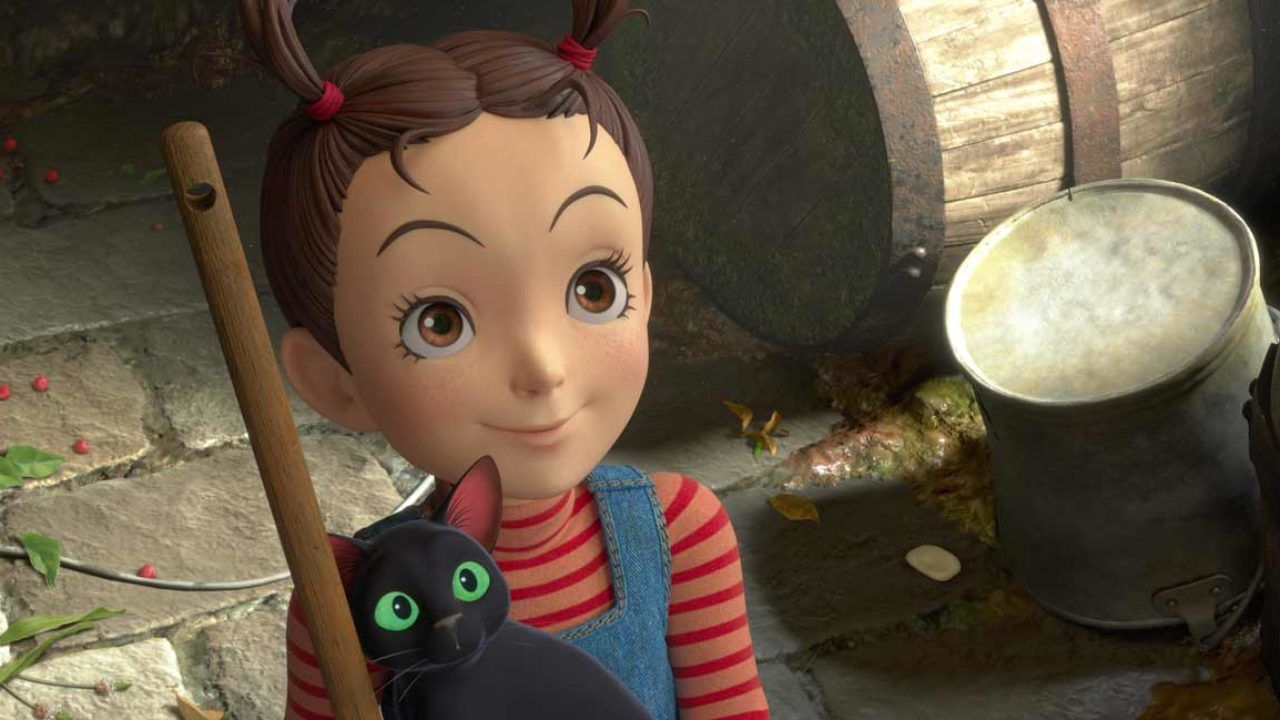A new Studio Ghibli movie is always cause for celebration, especially given the nebulousness of the company’s current status after supposedly shutting down in the summer of 2014 following the retirement of studio co-founder and filmmaker Hayao Miyazaki. Since then, they have still been active – Miyazaki worked on a short film for his museum (as seen in the documentary Never-Ending Man) and began production on a feature; they co-produced and contributed animation to the European feature The Red Turtle; and now they have a brand-new feature, Earwig and the Witch. The film debuted on Japanese television last month (their first made-for-TV movie since the tranquil Ocean Waves in 1993) and is now hitting American theaters and HBO Max. And while Earwig and the Witch looks unlike any other Studio Ghibli film, it still packs the same magic that makes their other films so endearing.
Based on a Diana Wynne Jones, the same British novelist that inspired Ghibli’s Howl’s Moving Castle, Earwig and the Witch focuses on a young, precocious orphan named Earwig (Kokoro Hirasawa in the Japanese version, Taylor Paige Henderson in the English dub) who is plucked from the orphanage by the witchy Bella Yaga (Shinobu Terajima or Vanessa Marshall) and her demonic cohort The Mandrake (Etsushi Toyokawa or Richard E. Grant). Once at home, Earwig is forced to help Bella Yaga concoct incredibly mundane spells for paying customers (one is called “A Spell to Make the Bus Come on Time,” another is to help the customer’s pet win top prize at the dog show). Little by little Earwig starts to uncover what is going on in the odd, constantly shapeshifting house and the truth behind who her mother really was.
Earwig and the Witch is full of the Studio Ghibli hallmarks you’d expect by now. It was directed by Goro Miyazaki, Hayao’s son (Hayao is credited with “planning” the film, although it’s unclear what that means exactly), who has directed several other projects for the company and is full of the kind of homespun, everyday fantasy that is present in much of the studio’s most beloved films. There’s a cat character named Thomas (Gaku Hamada or Dan Stevens), the witch’s “familiar,” that could have been plucked out of Kiki’s Delivery Service and there are tiny winged demons that flit about the house that are reminiscent of similar characters from My Neighbor Totoro or Princess Mononoke. Earwig herself is the kind of headstrong, adventurous young protagonist that frequently anchors the studio’s movies, whether it’s Kiki’s Delivery Service or Princess Mononoke or Spirited Away. And the story is told in the same deliberate, measured style that the company is known for (it’s occasionally baggy but with a svelte, ready-for-primetime 75-minute runtime nothing sags for too long).
But there is one key difference that sets Earwig and the Witch apart from the rest of the Studio Ghibli ilk – this is the first feature from the company that was produced using computer generated animation instead of going the traditional hand-drawn route. For some, this is something of a betrayal, since Studio Ghibli was one of the last bastions of fully (laboriously) hand-animated features. But if you look closely, it’s less of a betrayal and more of a progression. There have been elements of computer animation in several of the studio’s features, including Howl’s Moving Castle and Goro’s Tales from Earthsea. Goro also directed a fully computer-animated TV series, although it was done in a cel-shaded style that approximated hand-drawn animation, whereas Earwig and the Witch is full-on, 3D, Pixar-style animation. And honestly it works … to a point.
Most complaints centered around the look of Earwig and the Witch center around the unfinished quality of the animation. And to be fair, it does look pretty rough sometimes. Lighting is definitely wonky, textures occasionally feel flat and the entire movie seems like it was not fully rendered; movement is stiff and shutters, effects are copy-and-pasted, and simulations are off (watch the goop that rolls around in the witch’s bowl). And it’s not to say that an anime aesthetic cannot be translated to three dimensions. Look no further than last year’s uproarious Lupin III: The First, which itself was based in part on an early Hayao Miyazaki work, for just how faithfully you can translate the style of Japanese animation to a fully computerized world. The closest approximation in western animation is probably Flushed Away, the first Aardman Animation movie in 3D computer animation, that attempted the look and feel of their stop-motion productions. Like Flushed Away, there’s enough Studio Ghibli in Earwig and the Itch that you can tell what they were going for, even if it’s not wholly successful. Earwig and the Itch doesn’t look great, but rarely do its technical shortcomings take you out of the story.
And the story, for all of its charm and warmth ultimately feels as unfinished as the animation. There are a number of lingering questions, befuddling flashbacks to a 70s-era rock band that the witches (including Earwig’s mom, played in the western release by Kacey Musgraves) were a part of, and a cliffhanger ending that suggests a sequel or spin-off or something is on the horizon (although nothing has been annoyed, making it even more frustrating). There is plenty to love in Earwig and the Witch and the fact that there’s a new Studio Ghibli movie (even one that looks like this) feels downright miraculous, especially in our deeply cursed time. But for a studio renowned for the time and attention it gives both the technical and storytelling sides of its production, the finished product is remarkably uneven. Yes, it’s great that there’s a new Studio Ghibli movie, but that doesn’t mean that the new Studio Ghibli movie is great.
Grade: B
The film will be released on HBO Max on February 5th.



